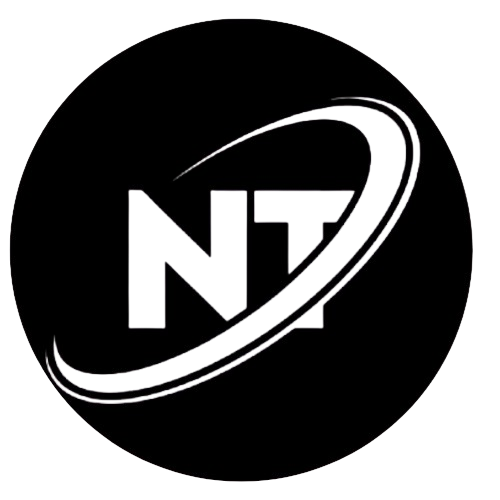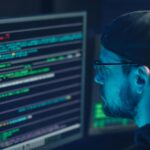Meta Description: Discover how .
Focus Keywords: AI-generated video, Sora AI, Pika Labs, Runway ML, AI video tools
Introduction
The world of video production is undergoing a seismic shift thanks to artificial intelligence. Tools like Sora, Pika, and Runway are transforming how we create videos—eliminating the need for expensive equipment, professional editing skills, and lengthy production times.
AI-generated video is no longer a futuristic concept; it’s here, and it’s evolving rapidly. Whether you’re a marketer, filmmaker, or content creator, understanding these tools can give you a competitive edge.
In this blog, we’ll explore:
- What AI-generated video is
- Key players in the space (Sora, Pika, Runway)
- How these tools work
- Their benefits and limitations
- The future of AI in video production
Let’s dive in!
What Is AI-Generated Video?
AI-generated video refers to the process of creating video content using artificial intelligence instead of traditional filming and editing. These tools leverage deep learning, generative adversarial networks (GANs), and natural language processing (NLP) to produce realistic or stylized videos from text prompts, images, or existing footage.
Unlike manual editing, AI video tools can:
- Generate scenes from scratch
- Enhance low-quality footage
- Automate tedious editing tasks
- Create hyper-realistic animations
With platforms like OpenAI’s Sora, Pika Labs, and Runway ML leading the charge, AI video generation is becoming more accessible to everyone.
Top AI Video Generation Tools in 2024
1. Sora by OpenAI
Sora is OpenAI’s latest breakthrough in AI-generated video. Unlike previous models, Sora can produce high-quality, minute-long videos from simple text prompts.
Key Features:
- Text-to-video generation – Describe a scene, and Sora creates it.
- High-resolution output – Up to 1080p quality.
- Dynamic camera movements – Simulates professional cinematography.
- Consistent storytelling – Maintains coherence across longer clips.
While still in limited beta, Sora has already showcased stunning demos, from futuristic cityscapes to underwater documentaries. Experts believe it could disrupt industries like advertising, filmmaking, and gaming.
🔗 Learn more about Sora on OpenAI’s official blog.
2. Pika Labs
Pika Labs is another powerful AI video generator that specializes in text-to-video and image-to-video transformations. It’s known for its ease of use and artistic flexibility.
Key Features:
- Free tier available – Great for beginners.
- Multiple styles – Cartoon, realistic, cinematic, and more.
- Fast rendering – Generates clips in seconds.
- Community-driven improvements – Users can vote on new features.
Pika is particularly popular among social media creators and indie filmmakers who need quick, high-quality content without a big budget.
🔗 Try Pika for free at Pika Labs’ website.
3. Runway ML
Runway ML is a comprehensive AI toolkit that goes beyond video generation. It offers AI-powered editing, green screen removal, and even full film production assistance.
Key Features:
- Gen-2 model – Turns text and images into videos.
- Advanced editing tools – Frame interpolation, motion tracking, and style transfer.
- Collaboration-friendly – Used by professional studios.
- API integration – Developers can build custom workflows.
Runway has been used in Hollywood productions, music videos, and ad campaigns, proving that AI is already reshaping professional media.
🔗 Explore Runway ML’s features here.
How Do AI Video Generators Work?
AI video tools rely on large datasets of videos and images to learn patterns. Here’s a simplified breakdown:
- Training Phase:
- The AI analyzes millions of video clips to understand motion, lighting, and textures.
- Models like diffusion models (used in Sora) refine outputs over iterations.
- User Input:
- You provide a text prompt (e.g., “A cyberpunk city at night”).
- Some tools allow image inputs for style consistency.
- Generation Process:
- The AI predicts frames sequentially, ensuring smooth transitions.
- Post-processing enhances details like lighting and resolution.
- Output:
- A fully rendered video, often customizable with edits.
While results are impressive, AI still struggles with:
- Complex physics (e.g., water splashes)
- Fine details (e.g., human hands)
- Long-term consistency (e.g., character identity across scenes)
Benefits of AI-Generated Video
1. Cost-Effective Production
Traditional video production requires cameras, actors, sets, and editors—costing thousands. AI slashes these expenses, making high-quality video accessible to small businesses and solo creators.
2. Speed & Efficiency
Need a video in hours instead of weeks? AI tools can generate clips in minutes, perfect for urgent marketing campaigns or social media trends.
3. Creative Freedom
With AI, you’re not limited by budget or logistics. Want a dinosaur in a spacesuit? Just type it in.
4. Scalability
Brands can mass-produce personalized videos for ads, tutorials, or customer engagement without extra costs.
Challenges & Ethical Concerns
1. Deepfake Risks
AI-generated videos can be misused for fake news, scams, or non-consensual content. Regulations are still catching up.
2. Job Displacement
Will AI replace videographers, animators, and editors? Some fear automation could shrink job markets.
3. Quality Limitations
While improving, AI videos still lack the nuance of human creativity. Over-reliance may lead to generic content.
🔗 Read about AI ethics at MIT Technology Review.
The Future of AI Video Generation
Experts predict that by 2026, AI-generated video will be indistinguishable from real footage. Possible developments include:
- Real-time AI video editing (like live filters for movies).
- Full-length AI films (Netflix already experiments with AI scripts).
- Interactive videos (where viewers influence the story).
As Sora, Pika, and Runway evolve, creators must adapt—leveraging AI while preserving authenticity.
FAQs About AI-Generated Video
1. Can AI-generated videos be monetized?
Yes, but check platform policies. Some stock video sites accept AI clips, while others restrict them.
2. Is AI video generation legal?
Generally, yes—but copyright and deepfake laws vary by region. Always disclose AI use if required.
3. Which is better: Sora, Pika, or Runway?
- Sora – Best for high-quality, cinematic clips.
- Pika – Great for quick, artistic videos.
- Runway – Ideal for professional editing & effects.
4. Will AI replace human filmmakers?
Unlikely. AI is a tool, not a replacement. Creativity and storytelling still need a human touch.





